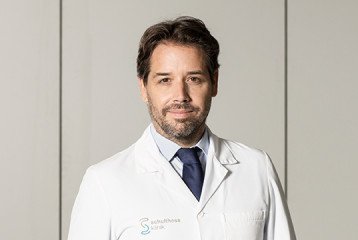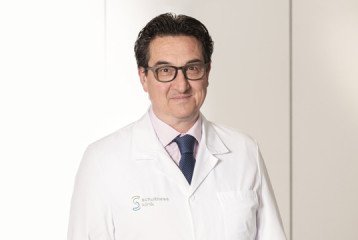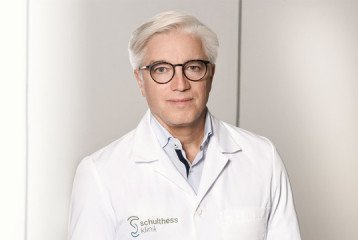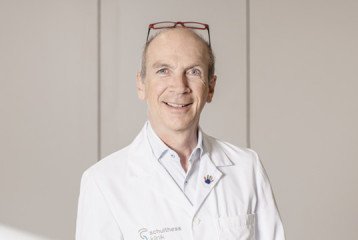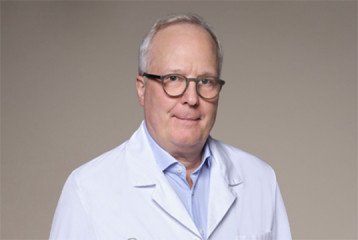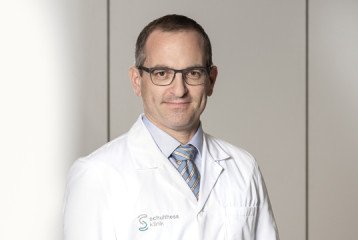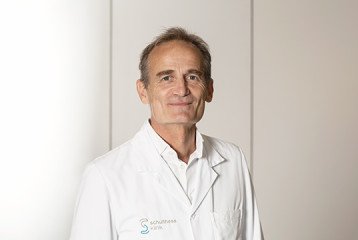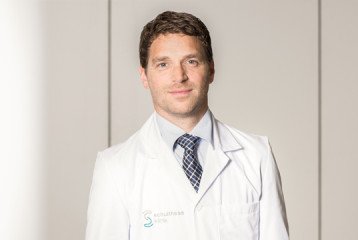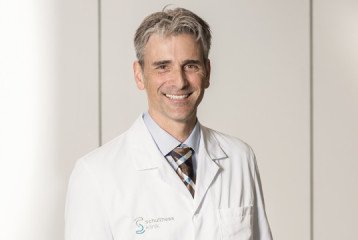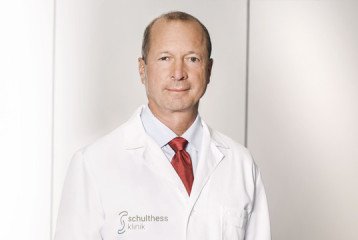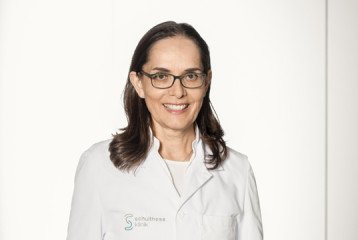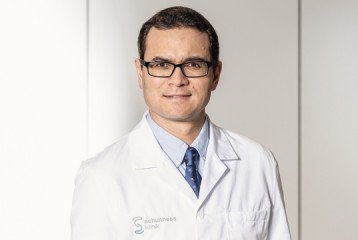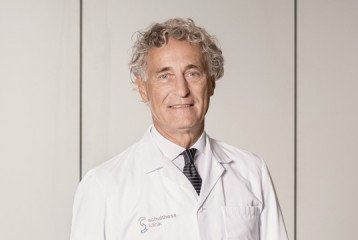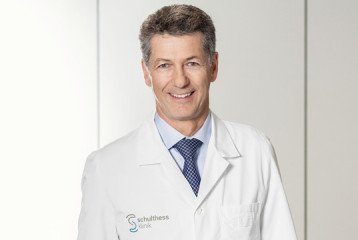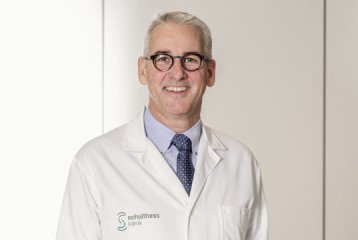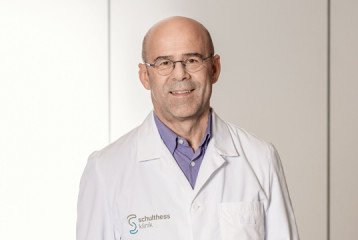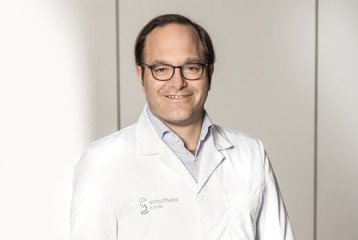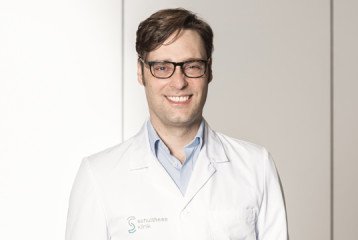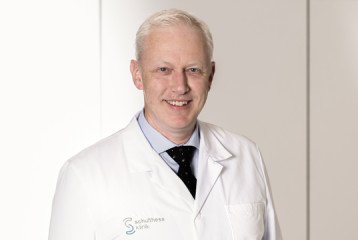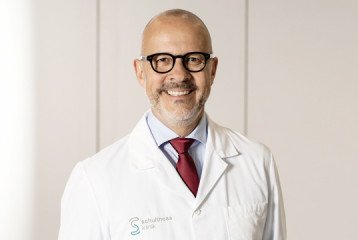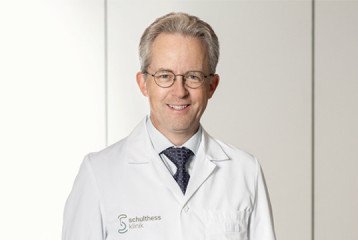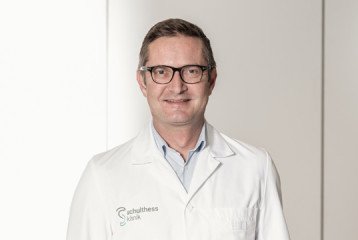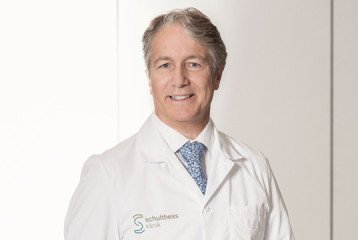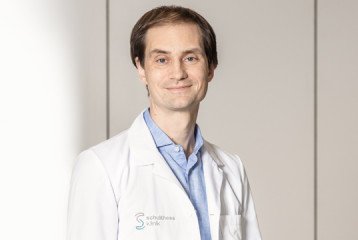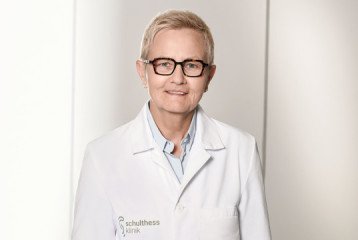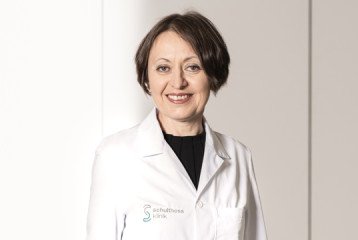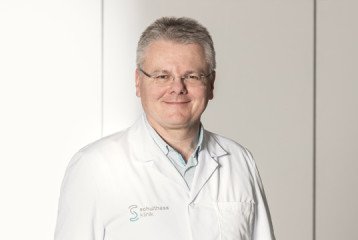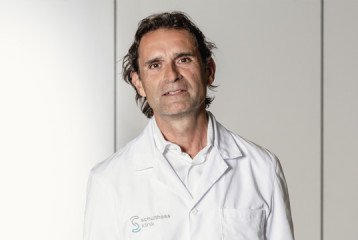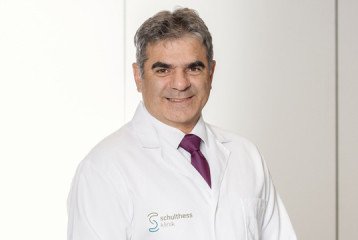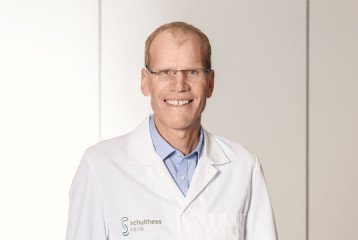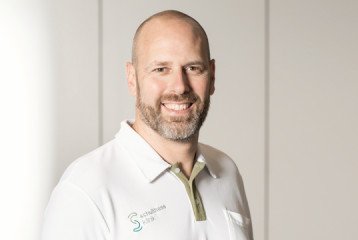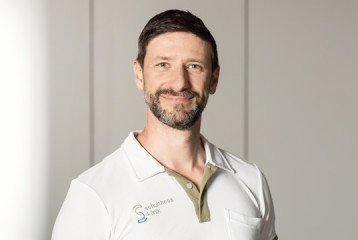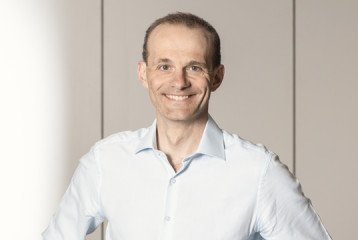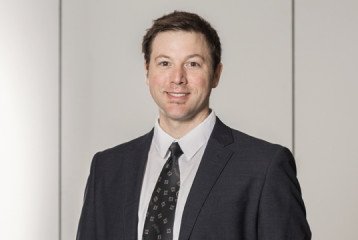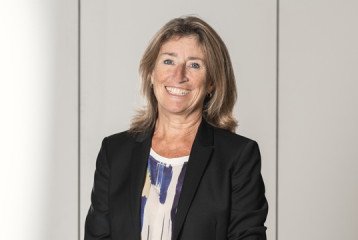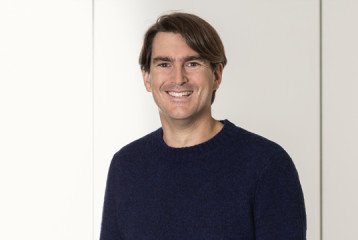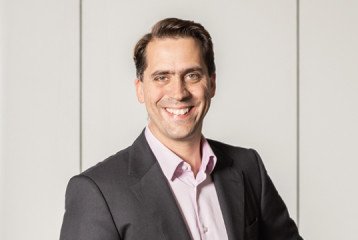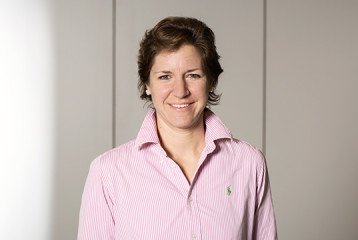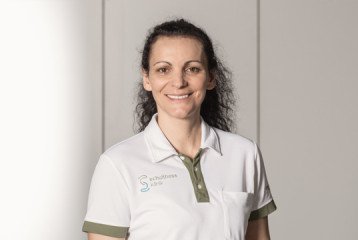Annual Report 2019
Schulthess Klinik is one of Europe's foremost orthopaedic clinics. As a specialist orthopaedic clinic, we focused once again in 2019 on offering first-class treatment for the musculoskeletal system – backed by a dedicated staff of 1,135 employees. We perform 9,365 surgical procedures each year,
provide care to 7,798 patients at our clinic and hold 121,200 outpatient consultations, and are thus a well established centre for the treatment of all different types of musculoskeletal-system conditions and injuries.
We stay on the move with top-class medical services, a humane approach and innovation.
Our focus is on movement. Our focus is on people. Our top priority is to relieve people of their pain, restore their mobility and get them back to everyday life and sporting activities.
Founded in 1883, the clinic has been financially supported by the Wilhelm Schulthess Foundation since 1935. It has always preserved its character as a non-profit organisation and it accepts patients from all insurance classes.
Schulthess Klinik focuses on orthopaedic surgery, neurology, rheumatology and sports medicine. We are also a certified Swiss Olympic Medical Centre. Our specialist departments offer patients scientifically based treatment with a high level of expertise, experience and state-of-the-art infrastructure. Our patients benefit here from the interdisciplinary interplay between our departments, as well as from our Research department, whose results are incorporated into everyday clinical practice at our facility.
As we begin the year 2020, we unexpectedly find ourselves in the midst of an exceptional and challenging situation. All of us must now do everything in our power to help fight the COVID-19 pandemic. Since the beginning of spring, everyone involved in the healthcare sector has suddenly had to deal with a whole new set of conditions that we must continuously adapt to. The entire Schulthess team has been called upon as well to make an extraordinary effort in these difficult times. However, the fact is that our team also displayed extraordinary effort and performance in the “normal” year of 2019, as this Annual Report clearly shows. Every one of our employees contributed to our success here, which is something that fills us with great pride.
We are always on the move as we continuously seek to expand the possibilities offered by orthopaedic medicine. We are driven by tradition and innovation in our effort to ensure that we can utilise our resources in a manner that results in the best possible quality of care.
Franz K. von Meyenburg
President of the Board of Trustees
We need to use our resources very carefully, as they are irreplaceable and also the most valuable raw material that we have at our disposal. That’s why we look after these resources – people, the environment and health.
A. Rytz
Director, CEO
Our all-round expertise enables us to maintain and improve the health of the musculoskeletal system through the application of scientific knowledge and the use of state-of-the-art infrastructure for healthy movement and exercise.
Prof. Dr. med. MichaeI Leunig
Head of Hip Surgery, CMO
Research and teaching for the good of patients
Quality means always knowing how the patient is doing. That’s why we stay close to our patients at Schulthess Klinik – even after their treatment has been completed, as we want to know how they are doing then as well. Our long-standing tradition of research includes more than 136,000 patient surveys that have been conducted since 2004. These surveys help us ensure that treatments can continue to be made even better and safer. We also pass on our knowledge through publications and teaching activities. The result is a tremendous amount of scientific output and partnerships with established Swiss and international institutions, universities and companies.
Cooperation between Schulthess Klinik and ETH Zurich
Cooperation between Schulthess Klinik and ETH Zurich in the area of teaching and research incorporates clinical questions into the research performed by ETH and, in this manner, promotes the use of new technologies when treating patients with musculoskeletal problems. This unique cooperation takes the form of a partnership between ETH's Department of Health Sciences and Technology (D-HEST) – a leading international academic institution working at the interface between health science and technology – and Schulthess Klinik in its role as one of Europe's foremost orthopaedic hospitals.
The Wilhelm Schulthess Foundation
In our role as a foundation, we invest heavily in the fields of teaching and R&D, and thus support the projects undertaken by our research teams. We need donations in order to be able to conduct research for the good of patients. We thank everyone who has made donations that help us continue such research, and develop even better innovations.
Schulthess Klinik as a CYBATHLON Medical Partner
CYBATHLON is a competition in which people with physical disabilities compete against each other to complete everyday tasks using state-of-the-art technical assistance systems. Schulthess Klinik is supporting CYBATHLON 2020 as a Medical Partner.
CYBATHLON is a project initiated by ETH Zurich that offers a platform to help drive research into assistance systems suitable for everyday use and increase awareness of the subject. The first competition was held in 2016 at SWISS Arena in Zurich, which sold out for the event. The next CYBATHLON is scheduled to take place on 19-20 September 2020. A preview of the big competition was offered by ETH Zurich and the Weltklasse Zürich track and field event organisation at Zurich main station on Tuesday, 27 August 2019, when eight teams faced off against each other in four disciplines: Powered Arm Prosthesis Race, Powered Leg Prosthesis Race, Powered Exoskeleton Race (“external support” fitted to the body) and Powered Wheelchair Race. Those who attended the event were able to see for themselves how innovative assistance technology can support people with physical disabilities in their everyday life.
Outstanding performance made possible by brilliant innovations and close cooperation in a team, all in an effort to help people who need assistance – Schulthess Klinik is pleased to be able to support a project as meaningful as CYBATHLON by serving as a Medical Partner.
Shoulder and Elbow Surgery

Our specialists in the Shoulder and Elbow Surgery department treat all types of shoulder and elbow conditions and injuries. Treatment approaches here range from the application of non-surgical methods to the provision of care for fractures and ligament and tendon injuries, the use of artificial joints, and the adjustment and modification (revision) of shoulder and elbow prostheses.
Our doctors work very closely with our research team and also actively participate in various studies. Our patients benefit from the scientific results of these studies, which are incorporated into everyday clinical practice at our facility. We are also happy to share our knowledge with colleagues in Switzerland and abroad through our teaching activities, our participation in various associations and our fellowship programmes that offer further specialised training to visiting doctors.
Shoulder Symposium with approximately 250 participants
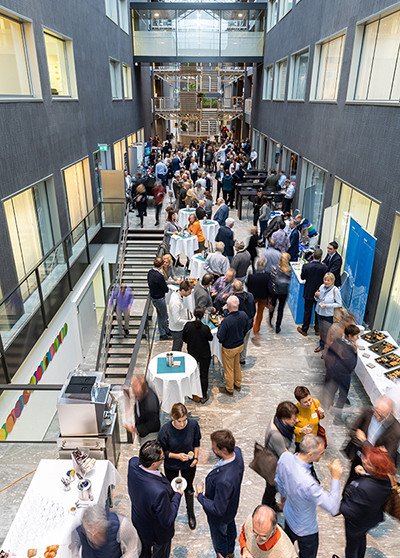
Our Shoulder Symposium in November 2019 focused on established standards and new trends in shoulder surgery. The presentations, demonstrations and discussions at the symposium created a bridge between innovations, evidence-based science and the everyday experiences of GPs, orthopaedic specialists, physiotherapists and chiropractors with regard to the diagnosis and treatment of shoulder conditions and injuries. The large number of symposium participants (approximately 250) showed just how much interest there is in shoulder surgery, a specialist area that has developed like no other joint-related surgical field over the last few decades.
Awards from the DVSE and SGOT
During its Annual Congress, the German Society of Shoulder and Elbow Surgery (DVSE) presented awards for two studies conducted by the shoulder and elbow team at Schulthess Klinik:
The «Biological Augmentation with Subacromial Bursa in Arthroscopic Rotator Cuff Repair» project received the Alwin Jäger Award. In this project, Florian Freislederer, Michael Dittrich and Prof. Dr. med. Markus Scheibel described a surgical technique that promises to improve the healing of tendons in rotator cuff tears (shoulder tendon tears).
The second DVSE award was for a study conducted by our research team in cooperation with the Winterthur Institute of Health Economics that addressed the question as to whether the implantation of shoulder prostheses can be viewed as a cost-effective approach. The study demonstrated that such an operation is not only very advantageous for patients, but also clearly cost-effective according to today’s health-economics standards. This study was presented with the DVSE’s Best Paper Award. It also was the recipient of the Maurice E. Müller Prize for the best clinical paper that was presented by the Swiss Society of Orthopaedics and Traumatology (SGOT). Dr. med. Michael C. Glanzmann and Cécile Grobet accepted the award on behalf of the entire authorship (Prof. Dr Klaus Eichler, Flurina Meier, Dominik Rickenbacher, Dr Beatrice Brunner and Prof. Dr Laurent Audigé).
Further information
Hand Surgery

Our specialist Hand Surgery team treats conditions and injuries that affect the hand, forearm and peripheral nerves. We cover the full range of surgical and conservative treatment options – i.e. with or without an operation.
The main areas of expertise of our Hand Surgery team include artificial joint replacement, complex wrist surgeries and the treatment of Dupuytren’s contracture. Our patients benefit here from close internal interdisciplinary cooperation – for example with the Neurology, Rheumatology and Ergotherapy departments.
Experience and scientific foundation
The treatments offered are based on our many years of experience, as well as the latest scientific findings. For example, our Hand Surgery team has been actively engaging in research for many years now, and it passes on its knowledge and expertise in various publications and through continuing education and training programmes. We are also involved in the development of prostheses, one example being the CapFlex finger joint prosthesis, which was developed at Schulthess Klinik and has since been used more than 1,000 times worldwide. We have also helped develop patient-specific implants that are used to correct improperly healed fractures of the forearm. These implants are made by printing individual plates. While the implant procedure is still only rarely performed around the world, it does offer great potential for the future. The results achieved with it will of course be documented and analysed in accordance with an evidence-based medicine approach.
Innovation Prize for Dr. med. Daniel Herren
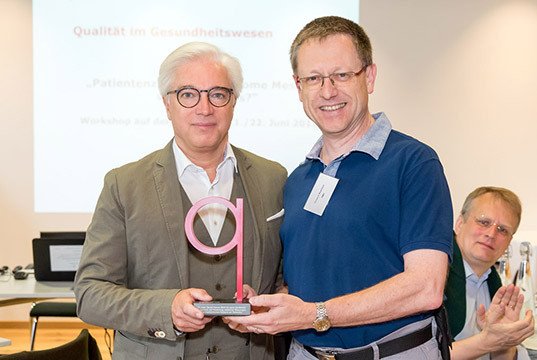
allianz q awarded its Innovation Prize to Dr. med. Daniel Herren in recognition of our Head of Hand Surgery’s continuous efforts to promote validated measurements of medical benefits for patients. allianz q is an interest group made up of various players in the healthcare system. Its guiding principle is “quality before costs” and it is committed to steering political discourse in the healthcare sector away from costs and towards improving quality for patients.
Greatest Future Clinical Application Award
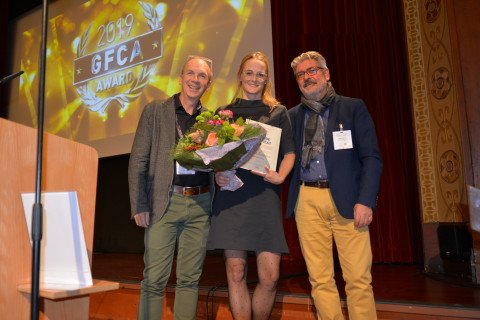
Getting our assistant physicians involved in research activities is also very important to us. We are therefore all the more pleased that one of our former assistant physicians, Dr. Lea Estermann, was presented with the Greatest Future Clinical Application Award at the national SGH/SGHR Hand Surgery Congress in Interlaken. The award, which is intended for specialist physician candidates, honours the presentation with the greatest potential for future clinical application and is issued to the main author of the study in question. The study led by Dr. Estermann investigated patient satisfaction following joint replacement in patients with inflammatory finger joint disorders. The other authors of the study were Dr. phil. Miriam Marks, Dr. med. Sylvia Kündig, Dr. med. Daniel Herren and Dr. med. Stephan Schindele.
Participation in associations
Our Chief Physicians are extensively involved in Swiss and international associations relating to the field of hand surgery. Dr. med. Daniel Herren, for example, is a member of the Council of the FESSH (Federation of European Societies for Surgery of the Hand). He has also been elected Secretary General of the federation, a position he will assume in June 2020. Dr. med. Stephan Schindele is a member of the Council of the Swiss Society of Hand Surgery (SGH), where he is responsible for Further Education and Training. He is also President of the BIRG (Bone Implant Research Group) and represents Swiss hand surgery specialists as a member of the Council of the Deutschsprachige Arbeitsgemeinschaft für Handchirurgie (DAH – German-Language Hand Surgery Working Group).
Further information
Hip Surgery
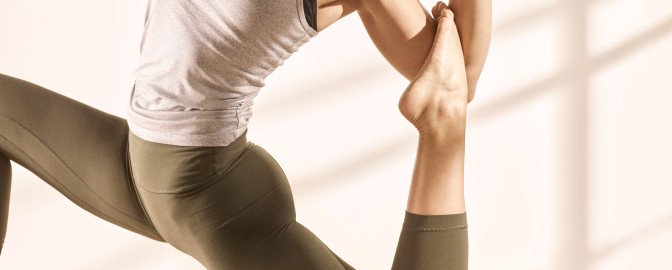
The Hip Surgery department at Schulthess Klinik is Switzerland’s largest centre of excellence for hip replacements. The department performs around 1,000 hip replacement procedures every year and also carries out complex revision operations
In addition to hip replacements, our specialists offer the complete range of hip surgery procedures, including arthroscopic interventions, reorientation of the pelvis and hip joint, and treatment of dislocations and fractures. It goes without saying that we also offer a broad range of non-surgical treatment methods.
Two-year revision rate for total hip replacements is half the Swiss national average
The Swiss National Joint Registry, Hip and Knee (SIRIS) is an instrument that can be used to assess the quality of orthopaedic specialists, hospitals and implant industry companies. Since September 2012, every surgeon who performs a hip or knee replacement has had to enter information on the prosthesis implant into the registry. One out of every 20 hip replacements documented in the registry were performed at Schulthess Klinik.
One of the most important quality criteria that the registry provides data on is the so-called 2-year revision rate for primary hip replacements – i.e. the percentage of patients who require a revision operation within two years after the original replacement. In the period between 2012 and 2017, the revision rate for Schulthess Klinik was 1.5% – as compared to the average of 2.8% for all of Switzerland. If one looks more specifically at total hip replacements due to hip osteoarthritis, the 2-year revision rate for Schulthess Klinik was only 1.3%, which is half of the Swiss national average of 2.6%.
Very low rate of infection for primary hip replacements as compared to the Swiss national average
The Swiss Registry for Surgical Site Infections managed by Swissnoso is another important instrument for assessing the quality of hospitals. The majority of Swiss hospitals have been participating in the registry system since 2009. One out of every 11 hip replacements registered in the period between 1 October 2017 and 30 September 2018 alone were performed at Schulthess Klinik.
The rate of infection one year after a hip replacement is the most important quality criterion here. During the aforementioned period, the rate of infection for Schulthess Klinik was 0.41%, which corresponds to only 35% of the Swiss national average (1.15%).
Further information
Knee Surgery
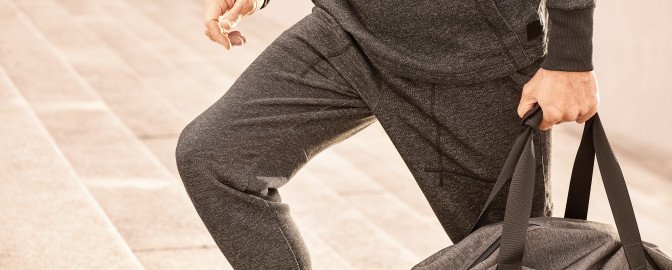
The Knee Surgery department at Schulthess Clinic is Switzerland’s largest reference centre for knee joint replacement. The department performs around 850 knee replacement procedures each year and also carries out complex revision operations. For decades, Schulthess Klinik has also been documenting all knee replacements and systematically conducting prosthesis follow-up checks.
This makes it possible to identify complications both early on and later on down the line, and then take corrective measures if necessary. This consistent follow-up also reveals information about quality, as well as fundamental problems relating to prosthesis design or surgical techniques. Such information can be used by scientists around the world as a basis for the development of important measures for improving the quality of treatment in future.
Along with prostheses, our specialists also offer the full range of joint-preserving surgical options, including everything from axial corrections and cartilage reconstructions to complex ligament reconstructions and more. We work at the interface between tradition and innovation. This means that, although we rely heavily on tried-and-tested procedures, we also make use of new or rarely performed procedures if, after careful consideration, it is determined that such procedures are likely to offer the best possible result for the patient in question.
Cement-free knee prostheses
While we continue to rely on traditional standard knee prostheses, there are also special procedures whose utilisation makes sense with certain types of patients. For example, these days more and more younger patients require a total knee replacement due to an osteoarthritis condition. In the case of this younger patient group especially, the requirements that a prosthesis must meet are more demanding due to the patients’ higher level of physical activity and their longer life expectancy. The main risk factor that could lead to a patient requiring a revision procedure some time in future is a loosening of the prosthesis – i.e. the prosthesis is no longer anchored firmly in the bone.
In order to meet the needs of this patient group and avoid revision procedures, we began in 2019 to utilise prostheses that are fixed in the bone without cement as a means of treating younger patients who display good bone quality. These prostheses can thus grow directly as the bone grows and become biologically secured. This cement-free procedure has been used with hip prostheses for years with very good long-term results.
Meniscus transplant – the last resort in rare cases
The two menisci in the knee perform an extremely important «shock-absorbing» function, without which the knee joint would not be able to function properly and would deteriorate prematurely. Depending on the extent of a meniscus injury, either a surgical or non-surgical treatment option can be employed. In the event that the meniscus has been extensively damaged, or if it has already been surgically removed, failure to perform an intervention procedure will invariably lead to the development of an osteoarthritis condition. A meniscus transplant can be performed on young patients (< 45) with an otherwise intact joint.
This is a very complicated arthroscopic operation that is only performed at a few specialised medical centres. Schulthess Klinik is the most experienced facility in Switzerland when it comes to performing such transplants.
Although artificial menisci do exist, these are only used in cases in which the meniscus is partially damaged. Such artificial menisci do not work if the entire meniscus is affected. A great deal of research is now being conducted in order to enable menisci to be «grown» from a patient’s own body tissue in future. However, it will take some time before such a process can be conducted in a clinical setting.
Ligamys: Repairing the anterior cruciate ligament instead of replacing it
Damage to the anterior cruciate ligament is one of the most common sport injuries to the knee joint. Before such injuries are treated, specialists determine whether physiotherapy measures can sufficiently stabilise the knee joint, or if surgery must be performed instead. Along with a cruciate ligament plastics procedure, in which a tendon autograft is used as a transplant, another treatment option in some cases is to reconstruct the injured cruciate ligament. The latter operation can only be performed within a maximum of 21 days after the injury occurs.
In such an operation, a suture is used to create a temporary splinting of the cruciate ligament, whereby this suture generates tension that relieves the stress on the ligament during the period of healing. The torn ligament is sutured as well. The advantage offered by this procedure lies in the dynamic reconstruction of the patient’s own cruciate ligament and the relatively short rehabilitation period in most cases. The procedure is therefore recommended for adults who participate in leisure time sporting activities on a frequent basis. After undergoing such a procedure, patients are assigned a specific training programme for physiotherapy follow-up treatment. Specialists at Schulthess Klinik have been performing this procedure since 2013.
Further information
Foot Surgery
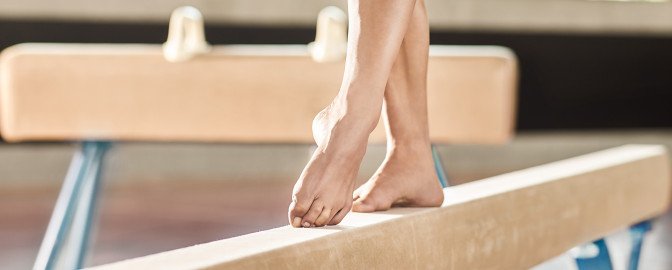
The Foot Surgery department focuses on treating foot and ankle problems and injuries.
The permanent team of doctors working in Foot Surgery consists of nine physicians, four of whom do not perform operations. The team also has two assistant physicians who each spend time in the department as they rotate through the clinic in half-yearly cycles as part of their training to become orthopaedic surgeons. The Foot Surgery department also practices valuable interdisciplinary cooperation within Schulthess Klinik – with the Sports Medicine and Physiotherapy departments, for example.
Broad range of treatments and a wealth of experience
With its numerous interventions and consultations, the Foot Surgery department at Schulthess Klinik boasts tremendous expertise and a wealth of experience, and is thus a leading player on the international stage.
Our surgeons perform both primary interventions and complex revision procedures. Hallux valgus and hammer toe corrections, osteoarthritis treatment, artificial joints and complex hindfoot surgery with tendon reconstruction are just some of the treatments the department specialises in.
Tried-and-tested conservative (non-surgical treatment) methods also play a key role in our treatment approach. For example, four of our doctors «only» utilise conservative treatment techniques, which explains why the number of outpatient foot consultations is nearly ten times higher than the number of foot operations performed by the department. Conservative treatment methods include shockwave therapy, which initiates the body’s own repair processes and can provide extensive relief to patients with a variety of conditions.
Close cooperation with GPs
Cooperation with referring physicians was an important issue for us last year as well. Close cooperation with GPs is the only way to ensure that we and the referring physicians can consistently offer patients the best standard of care by working together to provide non-surgical treatment or postoperative care. Our Foot Surgery team collaborates with referring physicians on a case-by-case basis. Over the last few years, for example, we have addressed the specific requirements of 2,383 referring physicians through extensive cooperation.
Our workshops for referring physicians, which focus on problems specific to the foot, proved very popular last year as well. Workshops are led by our Foot Surgery specialists who each present the latest medical findings and offer tips on diagnosis and treatment. The personal contact and professional exchange of ideas and experiences the workshops offer are very important to us as well, as they serve as a valuable source of feedback, suggestions and information on the challenges GPs face. The GPs also benefit from these aspects, which is definitely one of the reasons why we added 147 new referring physicians in 2019 alone.
Further information
Spine Surgery, Orthopaedics and Neurosurgery
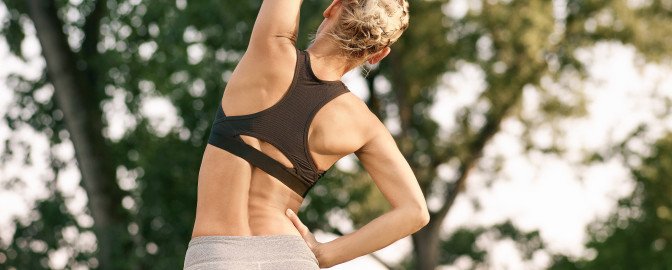
The specialist Spine Surgery and Neurosurgery team focuses on treating spinal conditions and injuries, including degenerative illnesses, inflammation, fractures, deformities and tumours.
Depending on the condition in question and its severity, treatments range from various conservative (non-surgical) techniques to extremely complex surgical interventions. Specialists from numerous medical disciplines need to work together in order to ensure the best possible care for patients. The spine specialists at Schulthess Klinik recognised this fact a long time ago and have therefore been utilising an interdisciplinary approach for more than 30 years now. In this set-up, the Spine Surgery and Neurosurgery team works together with the Neurology, Rheumatology, Manual Medicine and Physiotherapy departments. In addition, our doctors work very closely with our research team and actively participate in various studies. Our patients benefit from the scientific results of these studies, which are incorporated into everyday clinical practice at our facility.
European Spine Journal Max Aebi Award for Clinical Sciences
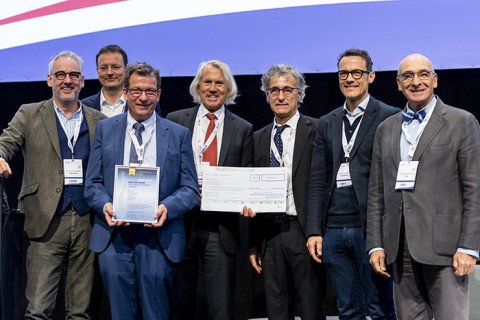
«What makes major back surgery safer?» Or more specifically, which monitoring method is best for preventing complications during spine surgery? This is exactly what our Spine team investigated in a study that has been awarded the European Spine Journal’s Max Aebi Award for Clinical Sciences 2018/2019.
In this study, the Spine team compared the advantages of various spine-surgery intraoperative neurophysiological monitoring (IONM) methods in order to prevent neurological complications during surgery. The conclusion was reached that multimodal IONM is significantly more effective and accurate than unimodal IONM in assessing and preserving spinal cord and nerve root function during spine surgery. Unlike unimodal monitoring, multimodal monitoring combines the measurement of all motor and sensory nerve pathways. The Schulthess Klinik has used this method routinely for 20 years.
EUROSPINE Best Podium Presentation Award
Another study conducted by our Spine team was presented with the 2019 Best Podium Presentation Award at the Spine Society of Europe’s annual EUROSPINE congress in Helsinki. The study on the topic of fusion operations in cases where the spine is showing signs of wear came out on top out of over 1,000 submissions. In this study, the Spine team at Schulthess Klinik determined how well fine adjustments of the spine shape can be carried out during the operation and what benefits patients ultimately gain from this. The outcome of the results after five years is that most patients gain a lot of benefits from such fine adjustments.
Postdoctoral thesis: PD Dr. med. Dezsö J. Jeszenszky, PhD
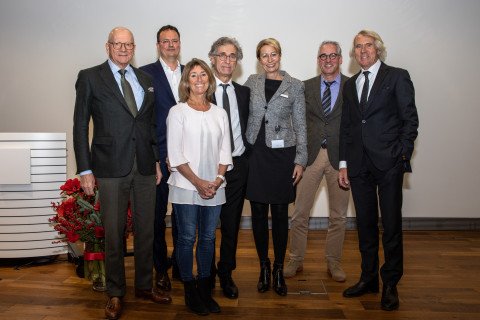
PD Dr. med. Dezsö J. Jeszenszky was formally awarded the venia docendi (which entitles him to teach at university level) on 19 November. The celebratory inaugural lecture took place at the Medical University of Debrecen in Hungary. This milestone was also celebrated on 9 December 2019 at Schulthess Klinik, where, together with PD Dr. med. François Porchet, Dr Jeszenszky has been head of Spine Surgery, Orthopaedics and Neurosurgery since 2004.
«What do we hope to achieve? What would be best for our patients?» These questions are not just the focus of PD Dr. med. Dezsö J. Jeszenszky’s postdoctoral thesis – in fact, they have been at the forefront of his mind throughout his career as a spinal surgeon. In other words, the celebrations were not just a tribute to his postdoctoral thesis entitled “New surgical procedures in the treatment of paediatric spinal column diseases”, but more so his tireless commitment and pioneering spirit to keep driving improvements in patient treatment.
Schulthess Klinik certified as AOSpine Centre
In April 2019, the AO Foundation designated Schulthess Klinik’s Spine Surgery, Orthopaedics and Neurosurgery department as the third «AOSpine Centre» in Switzerland, alongside the University Hospitals of Basel and Bern. Since 2011, highly specialised centres across the globe in the field of spine surgery have been certified as AOSpine Centres. The certification primarily assesses the number of operations, the existing infrastructure for patient care and research, and the commitment to education and training. Over the next few years, Schulthess Klinik plans to host spine surgeons from all over the world as AOSpine Centre guests for short or long fellowship stays.
Participation in associations
Our physicians are extensively involved in Swiss and international associations relating to the field of spine surgery. Dr. med. Tamás Fekete, for example, has been elected for a three-year term as Chairman of the EUROSPINE Programme Committee. PD Dr. med. Markus Loibl was elected a member of the Country Council of AO Spine Switzerland back in September 2018. As «Ortho Officer», he is representing the interests of orthopaedic spine surgeons within AOSpine Switzerland during his three-year term of office.
Further information
Paediatric Orthopaedics
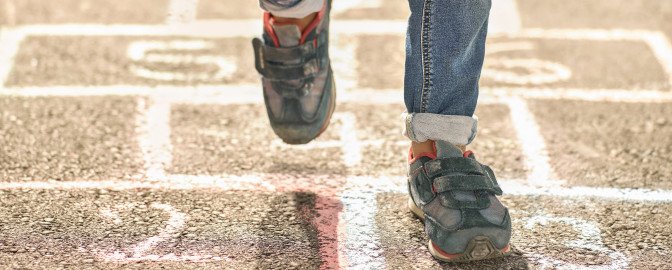
The Paediatric Orthopaedics department has been committed to providing personalised, child-friendly care ever since its establishment. We believe that close cooperation with our referring physicians, timely treatments and highly personal relationships with our patients are all essential for ensuring medical care of the highest quality.
Our treatment approach focuses on preventive measures, proven conservative (non-surgical) treatment procedures and surgical treatments that are as minimally invasive as possible. If necessary, our extensive expertise and wealth of experience enable us to offer support with all paediatric orthopaedics issues relating to complex surgical procedures. The possibilities offered by readily available interdisciplinary collaboration with other specialist departments at Schulthess Klinik guarantees first-class treatment, even for complex cases.
The specialised medical fields covered by the Paediatric Orthopaedics department include the treatment of club foot using the Ponseti method, bone-lengthening measures with computer-supported external fixators (Taylor Spatial Frame®), the use of the Precice® magnetically driven intramedullary nail (internal bone lengthening) and the treatment of various types of congenital and acquired deformities in children, adolescents and adults.
Severe clubfoot in older children – no operation necessary
These days, operations to correct clubfoot are no longer necessary if the physician treating the condition has sufficient experience. The impressive development achieved with a case of insufficiently pretreated clubfoot shows that the Ponseti method can potentially achieve outstanding results with older children as well.
Severe congenital malformation of the leg – reconstruction instead of amputation
A child is born with a severely deformed leg. Most of the tibia is missing, which would normally be a reason to amputate. However, specialists with extensive surgical experience can now in fact reconstruct the leg using the latest surgical techniques.
Leg lengthening without external fixation: a new technique
In the case of a femoral deficiency (where the leg is not only shortened but also deformed) accompanied by a lack of stabilising ligaments in the knee joint, lengthening measures are performed with an external fixation. In the case study in question, we employed a new lengthening technique using the fully implantable Precice® intramedullary nail and stabilised the knee only briefly with the fixation in order to protect it. This led to an outstanding result with a much higher level of comfort for the patient, but with the same degree of safety.
Ten years of examination courses for paediatricians
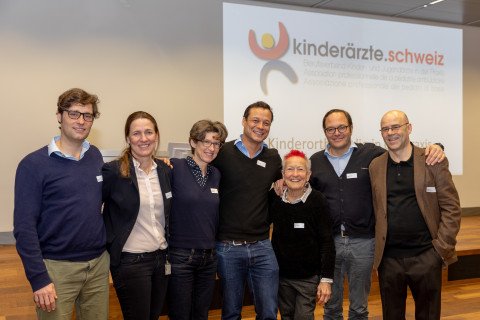
We have been conducting an annual examination course for paediatricians for ten years now in cooperation with the Kinderärzte Schweiz professional association. The course, which takes place in a very collegial and friendly atmosphere at Schulthess Klinik and is always fully booked well in advance, is organised with the help of Dr. med. Nadia Sauter Oes from Kinderärzte Schweiz. Each year, the course focuses on a specific topic such as paediatric foot, individual joints and the spine, with presentations and a discussion of typical issues that are examined in further detail using case studies. Each course also includes an important 90-minute practical component in which small groups practise the previously learned examination techniques on children.
The personal contact between paediatricians and our specialists is very valuable and also benefits young patients who need to visit the clinic. Indeed, many paediatricians now take advantage of the opportunity we offer them to simply contact us by phone or via e-mail in order to clarify questions that come up during their own examinations in their surgery.
Further information
Neurology
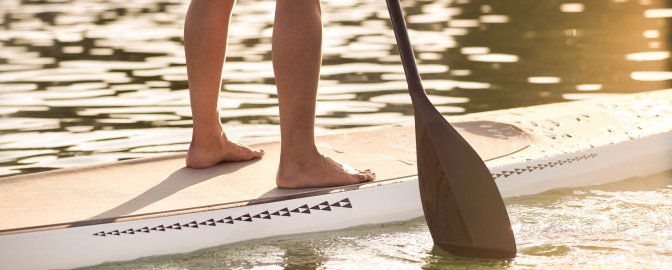
The specialists in the Neurology department at Schulthess Klinik offer the full range of neurology diagnosis and treatment services. Along with addressing common neurological conditions such as dementia, epilepsy, Parkinson’s disease, multiple sclerosis, dizziness and headaches, our team also conducts complex interdisciplinary assessments and treatments.
Infiltrations for assessment and treatment
We have been performing infiltrations since the 1990s. In this procedure, thin needles are used in conjunction with x-ray images in order to deliver medications to a specific location in the body in an extremely targeted manner. Such medications alleviate pain where it occurs or else help to determine the exact cause of the pain.
In 2019, we released new patient brochures that describe the infiltration procedure in a manner that can be understood by non-professionals.
The spine: a complex structure
The spine is a complex structure that the Neurology department at Schulthess Klinik has been focusing on extensively since the 1980s. We perform professional interdisciplinary assessments of spine conditions and symptoms and work very closely with our spine surgery specialists when doing so. Patients benefit from these joint assessments, as they enable our physicians to select a conservative and/or surgical treatment that offers the greatest chance of success.
MIOM ensures a high degree of safety when spine surgery is performed
The multimodal intraoperative monitoring (MIOM) procedure utilised by our Neurology department makes an important contribution to ensuring the safety of patients who undergo spine surgery. The continuous monitoring of the nervous system during an operation that is made possible by MIOM enabled us to perform complex spine surgery on 697 patients with the greatest possible degree of safety in 2019. Unlike unimodal monitoring, multimodal monitoring combines the measurement of all motor and sensory nerve pathways.
European Spine Journal Max Aebi Award for Clinical Sciences
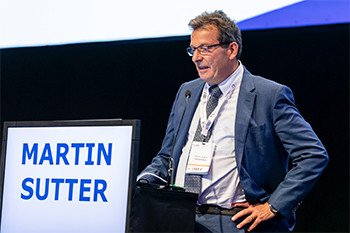
A study on intraoperative monitoring that was conducted jointly by the Neurology and Spine Surgery departments was presented with the European Spine Journal’s Max Aebi Award for Clinical Sciences. This study focused on a comparison of the different intraoperative monitoring methods used during spine operations. The study concluded that multimodal monitoring as practised by Schulthess Klinik for 20 years makes back surgery significantly safer than is the case when a unimodal monitoring approach is used.
Additional diagnoses for difficult-to-pinpoint nerve disorders
Our expertise and infrastructure for identifying difficult-to-pinpoint nerve disorders were once again in demand in 2019. With the help of ultrasound and electrophysiology, we were able to identify suspected but difficult-to-pinpoint nerve disorders in arms and legs in an efficient and judicious manner.
Further information
Anaesthesiology
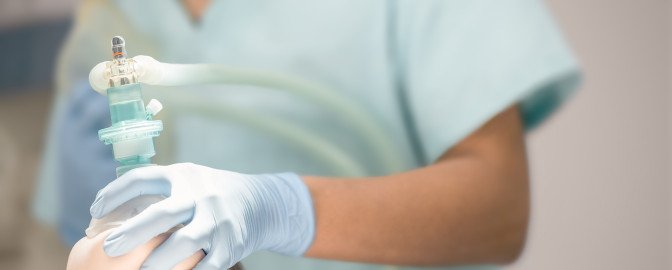
Our Anaesthesiology team takes care of patients before, during and after surgical interventions by providing the right anaesthetic for surgery and offering comprehensive postoperative care.
There for you: before, during and after your operation
Before the operation
The care offered by our experienced anaesthetists begins after attending physicians and patients decide together that an operation is to be performed. The following steps are then generally taken:
The anaesthetist determines through a conversation with the patient which type of anaesthetic is to be used in line with the given situation – i.e. a general or local anaesthetic, or a combination of both. This is important for ensuring that the most suitable and safest option for the patient is chosen. Anaesthetists need to gather extensive information on a patient’s state of health, habits and any concomitant conditions, for example. They therefore coordinate all the examinations required for this purpose. This may also involve ordering a routine examination by a GP and other examinations of the cardiovascular system or the lungs, for example.
Once all of the findings have been collected, the anaesthetist plans the specific procedure for the operation and the anaesthetic in consultation with the surgeon. Here, the patient’s wishes are taken into account as much as possible. The question as to whether the patient should be admitted to the clinic on the day before or the day of the operation is also addressed, as well as whether any medicinal preparations need to be made.
During the operation
The Anaesthesiology team stays by the patient’s side and monitors his or her condition during the entire operation. Along with administering the agreed-upon anaesthetic(s), and thus ensuring the patient remains unconscious and/or free of pain, the team also needs to perform numerous other tasks. These include monitoring and maintaining functions that the patient can no longer manage on their own, or only manage to a limited extent – e.g. cardiovascular stabilisation, breathing.
After the operation
The Anaesthesiology team continues to monitor and care for the patient after the operation. Prior to the operation, the team determines the extent of the care that will need to be provided after surgery. The amount of time the patient then spends in Intermediate Care (IMC) before being moved to a normal nursing ward depends on this determination. Important criteria here include the severity of any concomitant conditions and the scope and results of the operation. It’s very important to provide the right type of pain therapy as well.
The Anaesthesiology team also needs to remain in action in the days following an operation – for example if special pain minimisation procedures need to be performed.
Further information
Rheumatology and Rehabilitation

Rheumatology is a broad specialist area of medicine that addresses numerous and varied conditions ranging from degenerative joint and back disorders to osteoporosis and a wide variety of inflammatory conditions such as arthritis, whereby the scope of all of these conditions and disorders varies greatly from patient to patient. Rapid diagnoses, and thus timely and targeted treatment, is therefore crucial for ensuring the best care for patients.
A hub for interdisciplinary diagnosis and treatment
The Rheumatology team boasts long-standing expertise in the evaluation, treatment and care of patients, as well as state-of-the-art infrastructure for ultrasound examinations, bone density measurements and capillary microscopy, for example. Treatment approaches focus on targeted infiltrations of joints and the spine and the provision of medications for inflammatory conditions, including the use of biologic therapies – i.e. synthetic proteins that counteract the activities of certain cells and neurotransmitters that trigger inflammations. Patients also benefit from the Rheumatology team’s close cooperation with colleagues from the Neurology, Orthopaedic Surgery and Physiotherapy departments.
This interdisciplinary collaboration ensures that patients receive holistic care tailored to their individual needs. Here, the department often takes on the role of a diagnostic and therapy hub for the various specialist areas. During consultations with the Rheumatology team, the condition of patients is assessed competently and comprehensively, whereby this particularly applies to patients suffering from multiple problems of the musculoskeletal system. The team’s experts then make recommendations for possible further assessments and conservative treatment options.
Sharing ultrasound expertise
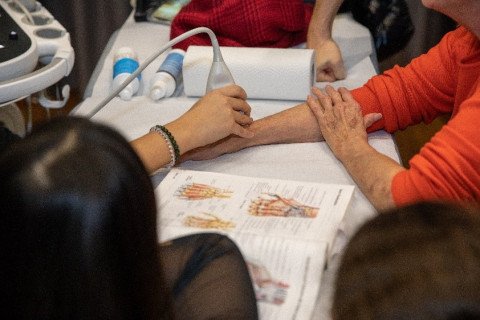
The final course in the training programme for «Musculoskeletal System Sonography» was held in November 2019 at Schulthess Klinik. Dr. med. Jürg Oswald, Senior Consultant Ultrasound and Rheumatology, taught the course in which approximately 40 participants from Switzerland and abroad learned how to perform ultrasound examinations on joints. The course also featured a practical component that allowed participants to perform ultrasound examinations on the hands, feet, hips, knees, shoulders and elbows of a group of patients. Participants also learned how to perform extremely precise infiltrations using ultrasound to assist them – one example here involved guiding a needle to button holes that had been placed inside a piece of mozzarella cheese.
Further information
Manual Medicine
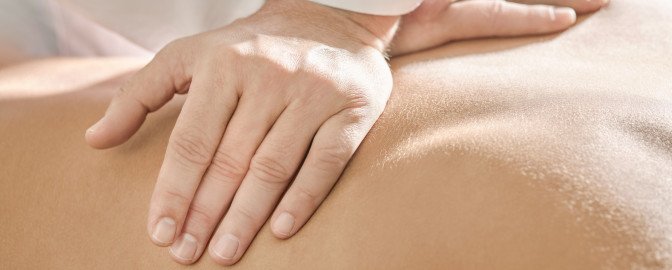
Specific forms of manipulation that relieve pain and promote the health of patients – that’s what manual medicine is all about. Manual medicine is used mostly to treat back problems and joint conditions.
Our specialists are there to help with conservative (non-surgical) treatments of various conditions that affect the spine, neck, shoulders, elbows, hands, hips, knees and feet. Treatments focus on releasing blocked joints while also taking muscles and nerves into account.
Erector spinae plane block
The erector spinae plane block is a special and relatively new treatment method that we utilised on a regular basis in 2019. The method is employed to treat various types of pain in emergency situations and in the operating theatre, and also to alleviate postoperative and chronic pain.
The erector spinae muscles are a group of long back muscles that start at the pelvis and run along the spine. Using a blockade as a treatment method involves injecting a local anaesthetic to anaesthetise pain-conducting nerve fibres. With a conventional blocking approach, individual nerves are targeted and blocked, usually with the help of ultrasound images. The erector spinae plane block, on the other hand, does not target an individual nerve but instead a fascia layer through which several nerves run underneath the muscles. This is where the new method offers the biggest benefit, as it enables the simultaneous blocking of what in many cases are a group of nerves that are causing or spreading the pain.
Persistent pain often leads to a lowering of the pain-perception stimulus thresholds of pain-conducting nerve fibres, which in turn triggers a vicious cycle of increasing pain. The local anaesthetic, which actually wears off after only a few hours, can also alleviate pain over a longer period of time because it acts like an «extinguisher» that breaks the vicious cycle.
Interdisciplinary Symposium
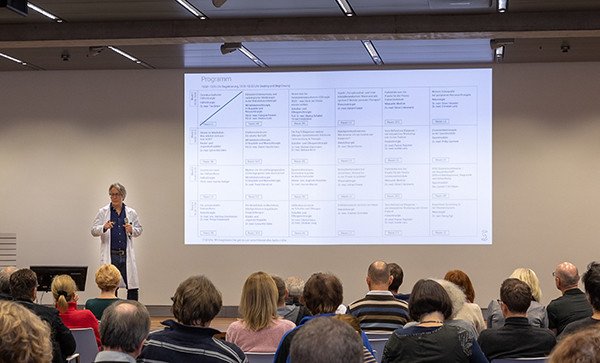
Schulthess Klinik held its 3rd Interdisciplinary Symposium in January. Nearly 250 GPs, paediatricians and chiropractors attended the symposium’s presentations and workshops on our complete range of medical services, whereby plenty of practical advice was offered as well. From shoulders to feet, from paediatric orthopaedics issues to prostheses, and from sports medicine to cognitive screening – a wide variety of topics were covered, with tremendous interest among all participants. Dr. med. Gérard Hämmerle, Head of Manual Medicine, played a key role in designing the symposium structure and also presented two papers on spine examinations.
Further information
Internal Medicine

The Internal Medicine department offers its broad and substantial expertise to help our patients before, during and after surgery.
Incorporating such professional internal medical treatment into the clinic’s care programme enables even patients with complex underlying conditions to undergo orthopaedic surgery to improve their mobility and thus enhance their quality of life. Complications relating to concomitant conditions are handled in a preventative manner or treated at an early stage of their development. This holistic approach to care is very much appreciated by patients, and it also helps keep the period of hospitalisation as short as possible.
Close cooperation with GPs
Our internal medicine specialists cooperate closely with GPs. GPs who are not available or whose capacity is limited can make appointments for their patients for internal medicine consultations at Schulthess Klinik. Our medical team will then manage the preoperative internal assessments and, where necessary, organise further assessments. The provision of a seamless flow of information to GPs is a given here.
Commitment to further education and training
Since 2018, the Internal Medicine department has been employing assistants from the Spital Zollikerberg Internal Medicine department for rotating assignments of three months at a time. These assistants, who are undergoing further training in internal medicine in line with the standards of the Swiss Medical Association, are offered a comprehensive insight into perioperative care for multimorbid patients at Schulthess Klinik.
Further information
Medico-Legal Affairs

Last year as well, Schulthess Klinik once again offered its full range of specialised knowledge to produce highly complex expert medical reports. The focus in 2019 was on accident and court reports, whereby the main areas covered were, as usual, orthopaedics, neurology, rheumatology and rehabilitation, and psychiatry.
Our Medico-Legal Affairs experts are heavily involved in everyday clinical practice, which means they have very extensive practical experience and their knowledge of new medical developments is completely up to date. In many cases, when they are called into action, preliminary expert evaluations have already been produced, which makes verified specialisations (e.g. for a specific joint) and extensive interdisciplinary cooperation a must. Our experts have such specialisations and they also practise interdisciplinary cooperation – after all, this is the way work at Schulthess Klinik is conducted in general.
The Medico-Legal Affairs department calls upon all of this expertise as needed and then puts it at the service of the client.
Further information
Sports Medicine
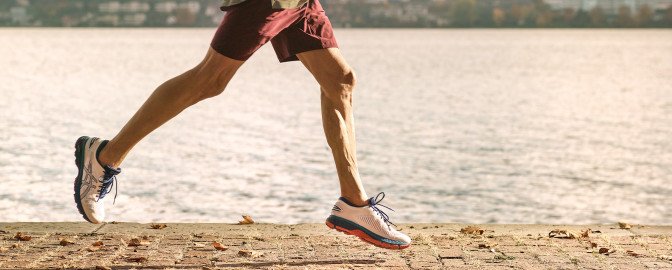
Our overriding goal is that all patients and athletes who come to us and receive care from us should be able to get back to movement and exercise and have fun doing it, regardless of the level of intensity with which they engage in sporting activities. The same goal was pursued in 2019 as well by the six experienced sports physicians at our Swiss Olympic Medical Centre.
Feedback from our customers shows just how much they appreciate the broad range of treatments and the comprehensive care we offer them. Our patients also benefit from our interdisciplinary cooperation with the surgical departments and other specialist departments at the clinic, such as Performance Diagnostics and Sports Physiotherapy. Our external network of specialists, consisting of experts in everything from sports psychiatry to sports cardiology and tumour orthopaedics, also helps out quickly whenever necessary.
In addition, we are continuously developing our diagnostic and therapeutic approaches, and we are gaining experience with already established methods in new application areas, which allows us to obtain valuable information that can help us in future. One example here involves autohaemotherapy in combination with isokinetic training therapy, which is particularly helpful for building up body strength in a manner that’s easy on the joints. We have also updated our preventive check-ups to make them even more scientifically based and effective.
At the clinic and on the sidelines of playing fields – for professionals, amateurs and up-and-coming athletes
We provide care for athletes at our outpatient clinic and on the sidelines of playing fields. We have the privilege of being able to celebrate all different types of club/association events together with the athletes we take care of, and we are also involved in the athletic and personal development of junior athletes. Here are some of the highlights we’ve experienced:
- We were along for the ride when the GCK Lions, the ZSC Lions’ farm team, made the ice hockey playoffs for the first time since 2013.
- We accompanied the Swiss Ice Hockey Federation’s under-17 (U17) team to the Four Nations Tournament in Kazan, Russia.
- A major football highlight was FCZ’s qualification for the Europa League’s Round of 32, in which they faced SSC Napoli.
- Numerous athletes who we provide care to celebrated successful campaigns in various Swiss and international tournaments – for example in beach volleyball and fencing. Moreover, even in “defeat” we were able to obtain new knowledge and insights that are allowing us to further develop our skills and methods in cooperation with club medical staffs and athletes.
- Although they generally don’t make headlines, the programmes that we support and which promote the athletic and personal development of junior athletes at the clubs we work with are also very important. Indeed, we find it very satisfying to be able to help ensure a healthy training and exercise regimen for the potential athletes of the future.
- We also share all of the knowledge and experience we gain in sports medicine. For example, our sports medicine experts hold lectures for medical students at ETH and the University of Zurich and teach practical courses on medical examinations and applied sports medicine for elite sport.
Further information
Therapy and Training
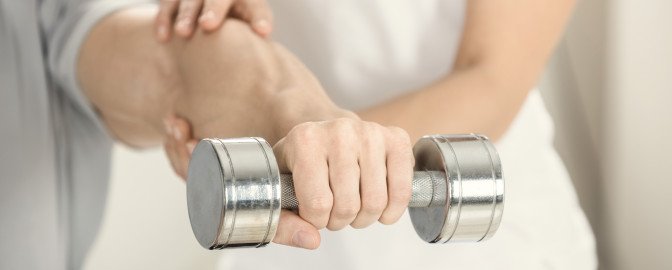
The Therapy and Training team serves patients and competitive and recreational athletes by providing treatments to address various problems with the musculoskeletal system. The team also offers postoperative rehabilitation, medical evaluations for athletes, training programmes, support with preparations for competitions and measures for the targeted prevention of injuries.
All of our therapists specialise in a specific field. The Physiotherapy department, for example, is divided into specialist groups for the hips and knees, shoulders and elbows, the spinal column and sports physiotherapy. Our Therapy and Training team also includes sports therapists from Schulthess Training, ergotherapists and performance diagnostics specialists. The team is always happy to pass on its knowledge in various internal and external presentations.
Physiotherapy Symposium
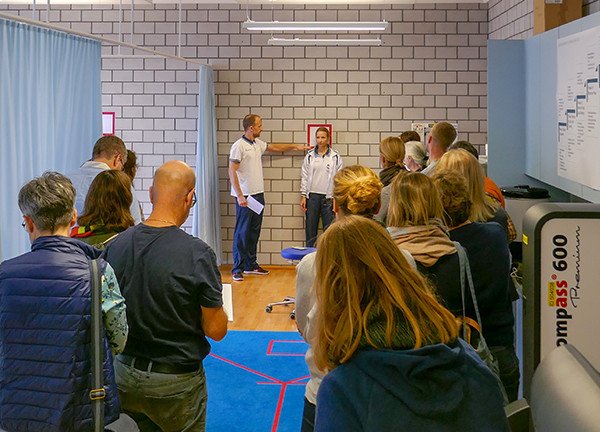
Our Physiotherapy Symposium that took place on 9 November 2019 provided a theoretical and practical update on developments in orthopaedics. Our specialised physicians and physiotherapists were on hand to share their knowledge of the musculoskeletal system in presentations and workshops that were attended by more than 120 physiotherapists from all over Switzerland. The topics addressed included treatment options for tennis elbow and elite athletes who suffer a herniated disc, and the standardised measurements and readings that need to be taken when planning rehabilitation programmes.
Running Sport Forum
The Schulthess Klinik Running Sport Forum took place for the third time in March 2019. More than 250 running enthusiasts were able to obtain valuable input and information relating to running, whereby the main topics addressed at the forum were trail running, injuries and running analyses.
Rapid Recovery
Rapid Recovery is a treatment approach for patients who are scheduled to receive an artificial hip or knee joint implant. The approach is designed to get the patient back into normal everyday life and activities after an operation, requires the participation of many professional groups at Schulthess Klinik. For example, the Anaesthesiology, Orthopaedics, Physiotherapy, Nursing Services and Patient Planning departments were all heavily involved in the introduction of the Rapid Recovery approach at the clinic, as were the Schulthess Klinik’s management team, the Operation Administration department and project managers from the prosthesis manufacturing industry. The biggest adjustment the Physiotherapy department had to make here involved the need to get patients moving again on the same day an operation is performed. Each of the relevant departments also had to set up a «Vita Parcours» to be used for exercise by recovering patients.
On the job at sporting events
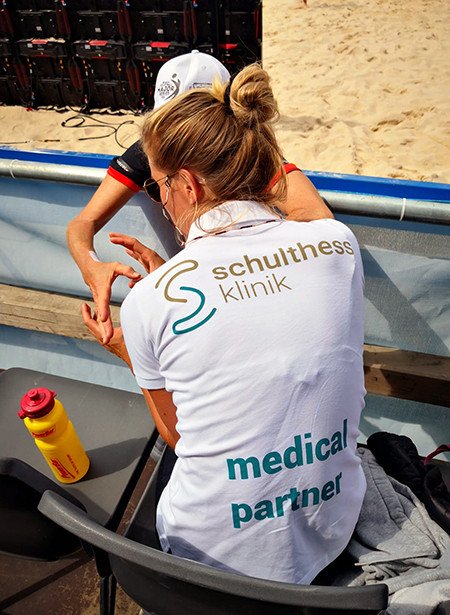
Our sports physiotherapists are on hand to assist athletes at numerous sporting events and training camps. The European Volleyball Championship, the Davis Cup, the Beach Volleyball Tournament in Gstaad and major fencing matches with Swiss fencers are just some of the highlights here.
Digital physiotherapy coaching with Physitrack
Remote patient coaching and exercise instruction – all this and more is made possible by Physitrack. This innovative solution offers patients and physiotherapists the opportunity to keep in touch between appointments as well. Physitrack and Schulthess Klinik teamed up to introduce the solution at the clinic, whereby both partners have developed programmes that specifically address the needs of different patient groups. Originally launched in a pilot project, the solution is now being used successfully at Schulthess Klinik. At the end of 2019, for example, 13 of our therapists and 142 patients were using Physitrack to ensure the provision of comprehensive care.
Ergotherapy
Our Ergotherapy department made numerous presentations at Swiss and international conferences last year.
A particularly important event in 2019 was the global hand surgery and therapy congress (IFSSH/IFSHT Congress), which took place in Berlin in June. One of our ergotherapists led a workshop on the Isoforce outrigger at the event. The Isoforce outrigger was developed by ETH and Schulthess Klinik. It has already been successfully used to treat major limitations of movement of the interphalangeal joints. During the IFSSH/IFSHT Congress, we also presented our concepts for postoperative ergotherapy following the implantation of prosthetic interphalangeal and metacarpophalangeal joints.
The 60th Symposium of the Deutschsprachige Arbeitsgemeinschaft für Handchirurgie (German-Language Hand Surgery Working Group) in September 2019 in Bern focused on the topic “When Nerves Get on Your Nerves – from Neuropathy to Neurogenic Pain”. Our Ergotherapy department presented a case study involving the treatment of neuropathic pain using the «somatosensory rehabilitation» method.
In November 2019, two members of our Ergotherapy department gave presentations at the annual conference of the Swiss Society of Hand Surgery (SGH) and the Swiss Society of Hand Rehabilitation (SGHR) in Interlaken: Brigitte Blum presented a paper on “Cognitive therapeutic exercises in accordance with the Perfetti concept – possibilities for hand therapy”, while Celia Schneider presented an overview of follow-up treatment schemes after implantation of metacarpophalangeal joints.
Further information
Teaching, Research and Development
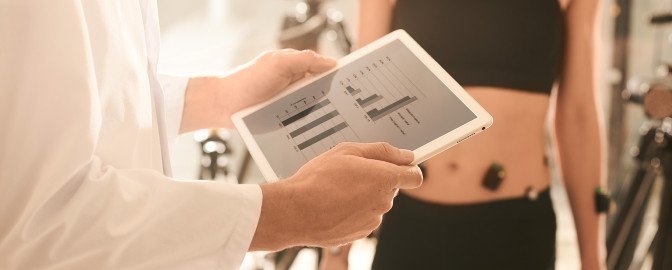
The Teaching, Research and Development department works together with the clinic’s other departments, and the scientific work the department carries out helps improve patient care at Schulthess Klinik. The department’s research teams work closely with physicians at the clinic. Our patients benefit from the resulting exchange of scientific information, which is incorporated into everyday clinical practice at our facility. We also share our knowledge with colleagues in Switzerland and abroad through our publications, teaching activities and partnerships, as our goal is to continually expand the possibilities offered by orthopaedic medicine.
Research – to ensure that patient care keeps getting better and better
Quality also means always knowing how the patient is doing. That’s why we stay close to our patients at Schulthess Klinik – even after their treatment has been completed, as we want to know how they are doing then as well. Our long-standing tradition of research also includes more than 136,000 patient surveys that have been conducted since 2004. These surveys help us ensure that treatments can continue to be made even better and safer.
Scientific output
Close collaboration between our researchers and doctors has produced numerous high-quality scientific studies.
| 122 peer-reviewed publications | 111 peer-reviewed congress abstracts |
| 44 Reviews | 222 lectures and training courses |
| 5 books and book contributions | 1 dissertation and thesis |
During the year under review, we completed 23 research projects that included one or more publications. We also had 114 ongoing projects at the end of the year.
Scientific awards in 2019
The following prestigious awards were presented to members of staff at Schulthess Klinik for their outstanding scientific achievements:
«The Alwin Jäger Award» from the German Society of Shoulder and Elbow Surgery (DVSE)
for the «Biological Augmentation with Subacromial Bursa in Arthroscopic Rotator Cuff Repair» study conducted by Florian Freislederer, Michael Dittrich and Prof. Dr. med. Markus Scheibel
«The Best Paper Award» from the German Society of Shoulder and Elbow Surgery (DVSE) and the Maurice E. Müller Prize from the Swiss Society of Orthopaedics and Traumatology (SGOT)
for the paper «Is the implantation of shoulder prostheses a cost-effective approach? A prospective health economics study from Switzerland.» The study was conducted by Dr. med. Michael C. Glanzmann and Cécile Grobet, Prof. Dr. Klaus Eichler, Flurina Meier, Dominik Rickenbacher, Dr Beatrice Brunner and Prof. Dr. Laurent Audigé
The allianz q Innovation Prize,
which was presented to Dr. med. Daniel Herren for his efforts to promote validated measurements of medical benefits for patients
«The Greatest Future Clinical Application Award» from the Swiss Society of Hand Surgery (SGH)
This award for specialist physician candidates was presented to one of our former assistant physicians Dr. Lea Estermann for a study on «Determinants of Long-Term Patient Satisfaction after MCP – Arthroplasty in Inflammatory Joint Disease», which Dr. Estermann conducted with Dr. phil. Miriam Marks, Dr. med. Sylvia Kündig, Dr. med. Daniel Herren and Dr. med. Stephan Schindele
The European Spine Journal’s Max Aebi Award for Clinical Sciences
for a study on «The Impact and Value of Uni- and Multimodal Intraoperative Neurophysiological Monitoring (IONM) on Neurological Complications During Spine Surgery: A Prospective Study of 2728 Patients.» This study was conducted by Dr. med. Martin A. Sutter, Dr. med. Andreas Eggspühler-von Orelli, PD Dr. med. Dezsö J. Jeszenszky, PhD, Dr. med. Frank Kleinstück, Dr. med. Tamás Fekete, PD Dr. med. Daniel Haschtmann, PD Dr. med. François Porchet and Prof. Dr. med. Jiří Dvořák
The EUROSPINE Best Podium Presentation Award
for a study on the «Spino-Pelvic Alignment After Short Segment Transforaminal Lumbar Interbody Fusion (TLIF) – Is Correction Possible and Worthwhile?», which was conducted by PD Dr. med. Markus Loibl, Dr. med. Felix Massen, Dr. med. Tamás Fekete, PD Dr. med. Daniel Haschtmann, Dr. med. Frank Kleinstück, PD Dr. med. Dezsö J. Jeszenszky, PhD, PD Dr. med. François Porchet and PD Dr. Anne Mannion, PhD
Postdoctoral thesis: PD Dr. med. Dezsö J. Jeszenszky, PhD
PD Dr. med. Dezsö J. Jeszenszky was formally awarded the venia docendi (which entitles him to teach at university level) on 19 November. The celebratory inaugural lecture took place at the Medical University of Debrecen in Hungary. The milestone was also celebrated on 9 December 2019 at Schulthess Klinik. «What do we hope to achieve? What would be best for our patients?» These questions are not just the focus of PD Dr. med. Dezsö J. Jeszenszky’s postdoctoral thesis – in fact, they have been at the forefront of his mind throughout his career as a spinal surgeon. Jeszenszky has worked tirelessly to continuously improve the treatment of spinal column deformities, especially for young patients who are still growing. In this sense, he has followed in the footsteps of Wilhelm Schulthess (1855–1917), who himself revolutionised treatment for scoliosis back in his day. Dr Jeszenszky’s postdoctoral thesis entitled «New surgical procedures in the treatment of paediatric spinal column diseases» reflects his most important findings in this area.
Application for funding from the Swiss National Science Foundation (SNSF) accepted
The Swiss National Science Foundation is supporting our research project on «Surgical Safety and Effectiveness in Orthopedics: Swiss-Wide Multicenter Evaluation and Prediction of Core Outcomes in Arthroscopic Rotator Cuff Reconstruction», which we are conducting in cooperation with University Hospital Basel. Prof. Dr. Laurent Audigé and Prof. Dr. med. Andreas Müller submitted the application for funding from the SNSF and are managing the project, which will evaluate the results achieved after an arthroscopic rotator cuff reconstruction operation is performed. The main goal of the project is to develop new methods for offering reliable prognoses to patients who have undergone such surgery. To this end, the project team is analysing the results achieved with 970 patients who had such reconstructive surgery at 17 Swiss hospitals and one German hospital.
Diagnosis, evaluation and treatment of young patients with hip-related pain
On the occasion of the Consensus Meeting of the International Hip-Related Pain Research Network, which took place at Schulthess Klinik, the British Journal of Sports Medicine began publishing a series of guidelines on the diagnosis, evaluation and treatment of young patients with hip-related pain. Dr. phil. Mario Bizzini, Dr. phil. Nicola Casartelli and Prof. Dr. med. Michael Leunig from Schulthess Klinik were involved in the formulation of these guidelines.
Knowledge gained through our research
«Not too early and not too late: We have identified a group of symptoms for which thumb carpometacarpal joint operations achieve the most success. In the case of minor symptoms that affect the thumb, it often makes sense to wait a while or to utilise a conservative treatment method before performing surgery. However, one should not wait too long before operating – that is, one should not wait until the symptoms become too severe.”
Marks M, Grobet C, Audigé L, Herren DB. “Clinical thresholds of symptoms for deciding on surgery for trapeziometacarpal osteoarthritis.” J Hand Surg Eur Vol 44: 937-45, 2019.
«Complications are often unavoidable in a medical setting. It is important, however, to learn from complications in order to minimise future risks. The use of a standardised system for reporting and documenting complications and unfavourable events is therefore essential. Working with 96 orthopaedic specialists from all over the world, our group was able to develop a method that everyone agreed will enable the effective documentation of clinically relevant unfavourable events that occur after a shoulder joint replacement. This will create a better understanding of the risk of complications occurring and will also make it possible to reliably compare different implants – which in turn will improve patient safety.»
Audigé L., Schwyzer H.-K., SA CES Consensus Panel, Durchholz H. «Core set of unfavourable events of shoulder arthroplasty: an international Delphi consensus process.» J Shoulder Elbow Surg (open access) 28: 2061-2071, 2019.
«With regard to postoperative pain reduction for patients with scoliosis, does it make a difference if patients are operated on while they are still young or if surgery is performed later, when they are already adults? No. Our data shows that even if surgery is performed between the ages of 19 and 30, a reduction of back pain is still possible, whereby this reduction can be compared with the results achieved if the operation is performed earlier. This fact ensures extra time can be taken for careful monitoring and possible surgery later on, particularly with regard to young patients with a light or moderate case of scoliosis that the attending physician believes will progress slowly over time.»
Fekete TF, Mannion AF, Haschtmann D, Loibl M, Kleinstück F, Jeszenszky D. „Back pain and its change after surgery in adolescents and young adults with idiopathic scoliosis.» Spine Deform 7: 754-758, 2019.
«Spine operations that are performed at a large Swiss teaching hospital by an assistant physician under the supervision of a trained and experienced surgeon offer patients a degree of safety that is comparable to a situation in which the experienced surgeon performs the operation him or herself. In terms of the patient’s postoperative experience, the fact of who performed the surgery was found to have no relevant influence on the surgery outcome. This means that we at Schulthess Klinik can guarantee all patients the same high quality surgical care for spinal conditions, regardless of whether a trained specialist or a monitored physician-in-training performs the operation.»
Waisbrod G, Mannion AF, Fekete TF, Kleinstück F, Jeszenszky D, Haschtmann D. „Surgical training in spine surgery: safety and patient rated outcome.» Eur Spine J 28: 807-816, 2019.
«Cell-based therapies such as autologous chondrocyte implantation are very promising in terms of repairing major cartilage defects. Unfortunately, the procedure is difficult to perform because it involves two surgical interventions, not to mention the high costs for the cell cultures. This newly developed method produces similarly good results at a low level of patient stress and discomfort, and at a significantly lower cost.»
Massen FK, Inauen CR, Harder LP, Runer A, Preiss S and Salzmann GM. „One-step autologous minced cartilage procedure for the treatment of knee joint chondral and osteochondral lesions: a series of 27 patients with 2-year follow-up.” Orthop J Sports Med (2019) 7: 2325967119853773.
«Preventing sport injuries – but how? Effective training programmes for injury prevention often consist of a combination of different exercises to build strength and promote balance, mobility and stretching. If there’s not enough time to cover all of these aspects, the focus should be placed on exercises that build strength and promote balance, as these are the most important exercises and should be part of every injury-prevention training session.»
Brunner R, Friesenbichler B, Casartelli NC, Bizzini M, Maffiuletti NA, Niedermann K. “Effectiveness of multicomponent lower extremity injury prevention programmes in team-sport athletes: an umbrella review.” Br J Sports Med 53: 282-288, 2019.
«For most patients suffering from femoroacetabular impingement syndrome, a conservative treatment should be attempted before any operation is planned. For example, a standardised and progressive exercise therapy programme has been found to eliminate hip pain in half of patients suffering from femoroacetabular impingement syndrome, and such a programme also improves the patient’s hip function and quality of life.»
Casartelli NC, Bizzini M, Maffiuletti NA, Sutter R, Pfirrmann CW, Leunig M, Naal FD. “Exercise therapy for the management of femoroacetabular impingement syndrome: preliminary results of clinical responsiveness.” Arthritis Care Res (Hoboken) 7:1074-1083, 2019.
Research and teaching partnerships
Our scientific network includes numerous Swiss and international partners and interest groups, such as: ETH Zurich, EPFL Lausanne, Zurich University of Applied Sciences Winterthur, University Hospital Zurich, University Hospital Basel, Centre Hospitalier Universitaire Vaudois Lausanne, Charité-Universitätsmedizin Berlin, Balgrist, the AO Foundation, the Swiss Patient Safety Foundation, the European Spine Study Group, the Univers Revers Study Group, the Arthroscopic Rotator Cuff Repair Outcome Prediction Group, the University of Oxford, the University of Utah, Humanitas University, the Medical University of Vienna, the University of Turin and the University of Alcalá.
We continued our long-standing research and teaching partnership with ETH Zurich in 2019. This partnership also involves numerous courses taught by our specialists. For example, researchers and doctors from Schulthess Klinik held a Demonstration Week to introduce the topic of «Clinical Research» to students in ETH's Department of Health Sciences and Technology. In addition, students in the Human Medicine programme were once again able to take a course on «Physical Examination of the Musculoskeletal and Nervous Systems».
We are also pleased to be part of the Reha Initiative that is designed to improve the quality of life of people with physical limitations and enable them to take part in normal daily activities as much as possible. In order to improve research in this area, ETH also plans to launch a new Master’s degree programme in Rehabilitation Science and Technology. The Wilhelm Schulthess Foundation is funding a professorship for Data Science Applications for Personalised Health Services, which will be part of the new Master’s programme.
In 2019, we were involved in another interesting partnership, with École polytechnique fédérale de Lausanne (EPFL). Here, eight students in the Biomechanics of the Musculoskeletal System Master’s degree programme managed by Prof. Pioletti worked in a joint project under the direction of PD Dr. med. Hannes Rüdiger and Dr Vincent Stadelmann. The project resulted in the creation of a new instrument design, which was then actually presented at the annual conference of the Swiss Society of Orthopaedics and Traumatology (SGOT). A training project for redesigning a commercial hip prosthesis was also conducted within the framework of the partnership with EPFL.
Further information
Inpatient Departments Nursing Services
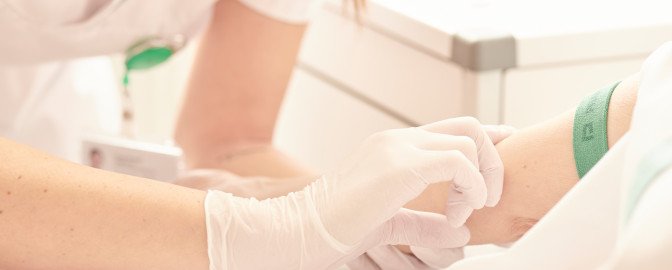
In 2019, five inpatient departments with 105 full-time positions and a total of 132 employees from five professional groups took care of 7,798 inpatients in a personalised, professional, interdisciplinary and future-focused manner in accordance with our nursing care mission statement. Everything our Nursing Services teams do focuses on patients and their health, which is also why our processes and guidelines are designed in line with the latest knowledge and findings obtained in the healthcare sector. In accordance with this approach, we refined and optimised various processes in 2019 as well.
Increase in bed occupancy
We have restructured and optimised our wards, and this has enabled us to increase bed occupancy. The number of beds that are ready to use has been aligned with actual needs. This has led to new requirements with regard to bed planning. The steadier occupancy levels on the wards is also expected to make the quality of patient care even more consistent throughout the clinic.
Partnership with reha@home
We have been working closely with «reha @ home» since March 2019. «reha @ home» is a company that provides all the services a patient needs at home following a hospital stay – everything from medical care and therapies to household and comfort-enhancing services. Our partnership with «reha @ home» ensures we can provide optimal follow-up care with a seamless transition from an inpatient to an outpatient setting. We successfully completed an initial pilot project with «reha @ home» and have since further solidified our cooperation. Several patients have already taken advantage of the new service.
Optimised Rapid Recovery
Rapid Recovery is a treatment approach for patients who are scheduled to receive an artificial hip or knee joint implant. The approach is designed to get the patient back into normal everyday life and activities after an operation. By making adjustments along the entire treatment path in the case of the aforementioned operations, we have been able to shorten the duration of a patient’s stay at the clinic, as well as patient recovery times. In addition, patients feel safer and more confident when they leave the hospital to go home. The following features are part of the Rapid Recovery approach: no administering of sedatives before an operation, patients walk into the operating theatre on their own, initial attempts at walking are to be made with the help of the Physiotherapy department on the same day the operation is performed.
Electronic patient documentation
We switched over to a fully electronic system for patient medical records in the summer of 2019. Our Nursing Services team managed the conversion process very effectively. These days, all of our staff work with a modular care trolley or a laptop. The big benefit offered by electronic medical records is that they make all information easily accessible.
Skill and grade mix
We paid a lot of attention to the skill and grade mix for Nursing Services last year as well. Our goal here was to examine the various types of training our staff have undergone, as well as their skills and experience, and to use this information to optimally coordinate the way their knowledge and expertise are utilised.
The five nursing teams from the wards are structured as follows: 105 full-time positions and a total of 132 employees from five different professional groups: HF (trained at a professional vocational education institution), FaGe (trained as a healthcare professional), AGS (trained as a healthcare and social assistant), PH (degree from a school of education), interns. We also 18 have HF students and 26 FaGe trainees.
Further information
Radiology
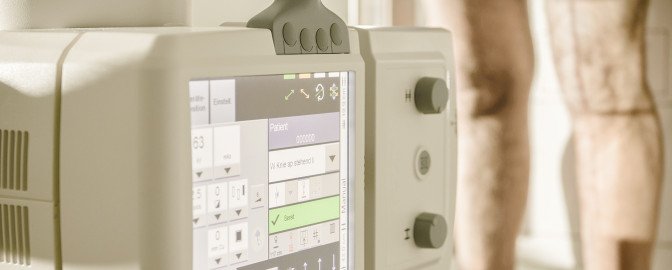
Radiology is a specialist department equipped with state-of-the-art, low-dose X-ray systems. A special feature of radiology at Schulthess Klinik is the production of complete digital leg and spine images (EOS) in 2D (animated film) and 3D technology. Our Radiology department also works closely with the Medical Radiological Institute (MRI), which has its own separate location at Schulthess Klinik. Such close cooperation enables precise magnetic resonance imaging for patients – right in our clinic.
Expansion of our radiology activities
The need to obtain high-quality images is increasing, as is reflected by the greater number of patients who now seek out the services offered by our Radiology department. Several rooms at the department have been rearranged and two new devices have been procured in order to meet the higher demand. One of the new devices is a second Ysio Max X-ray machine from Siemens. This machine also has a stitching option – i.e. it can produce images of an entire spine or leg. The machine is used mostly with children and patients with back problems. In order to improve the quality of imaging during surgery, we also procured a MobileDaRt machine.
In addition, we invested in a micro dose for our EOS system. We will begin using the system in 2020 – primarily to capture complete leg and spine images and will be used mainly in our Paediatric Orthopaedics department. The micro dose makes it possible to further reduce the already very low radiation dose needed for a standard EOS examination. It thus offers the safest technology for paediatric applications, which is a major benefit, especially with regard to younger patients who need to have images taken repeatedly.
Refurbishing and expansion of the MRI
The expansion of activities and possibilities was also a major issue at the MRI in 2019, whereby this expansion required various construction measures and the installation of new infrastructure components: Since the beginning of 2020, the scope of services offered by the Medical Radiological Institute (MRI) at Schulthess Klinik has included the use of two state-of-the-art MR devices (1.5 Tesla and 3 Tesla) with a patient-friendly 70 cm bore, a 128-slice CT scanner, and a flat-panel detector radiography device of the latest generation. The MRI has thus now become a state-of-the-art centre of musculoskeletal radiological expertise. The radiology team specialises in imaging for orthopaedics, sports medicine and rheumatology, and meets every examination request for magnetic resonance imaging of the musculoskeletal system and the spine.
